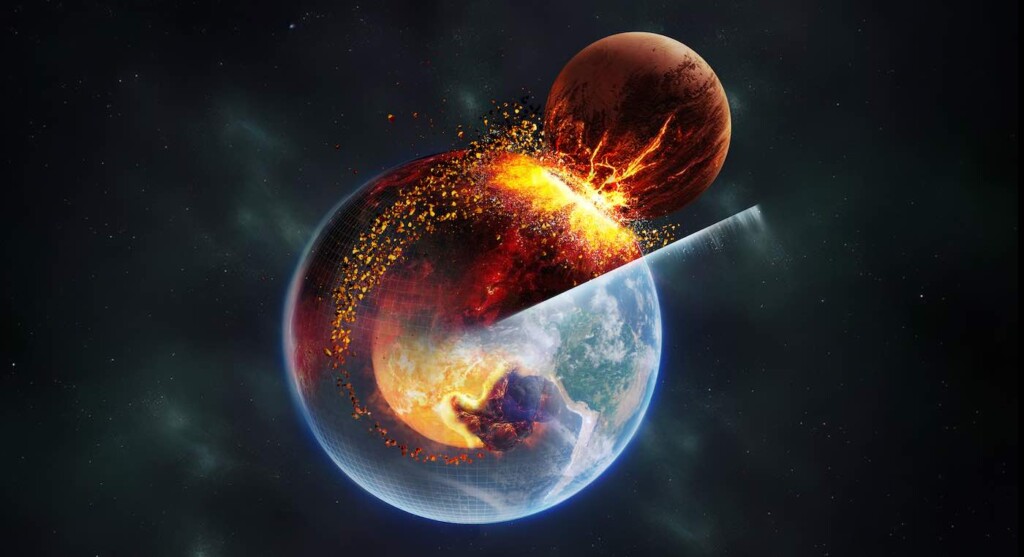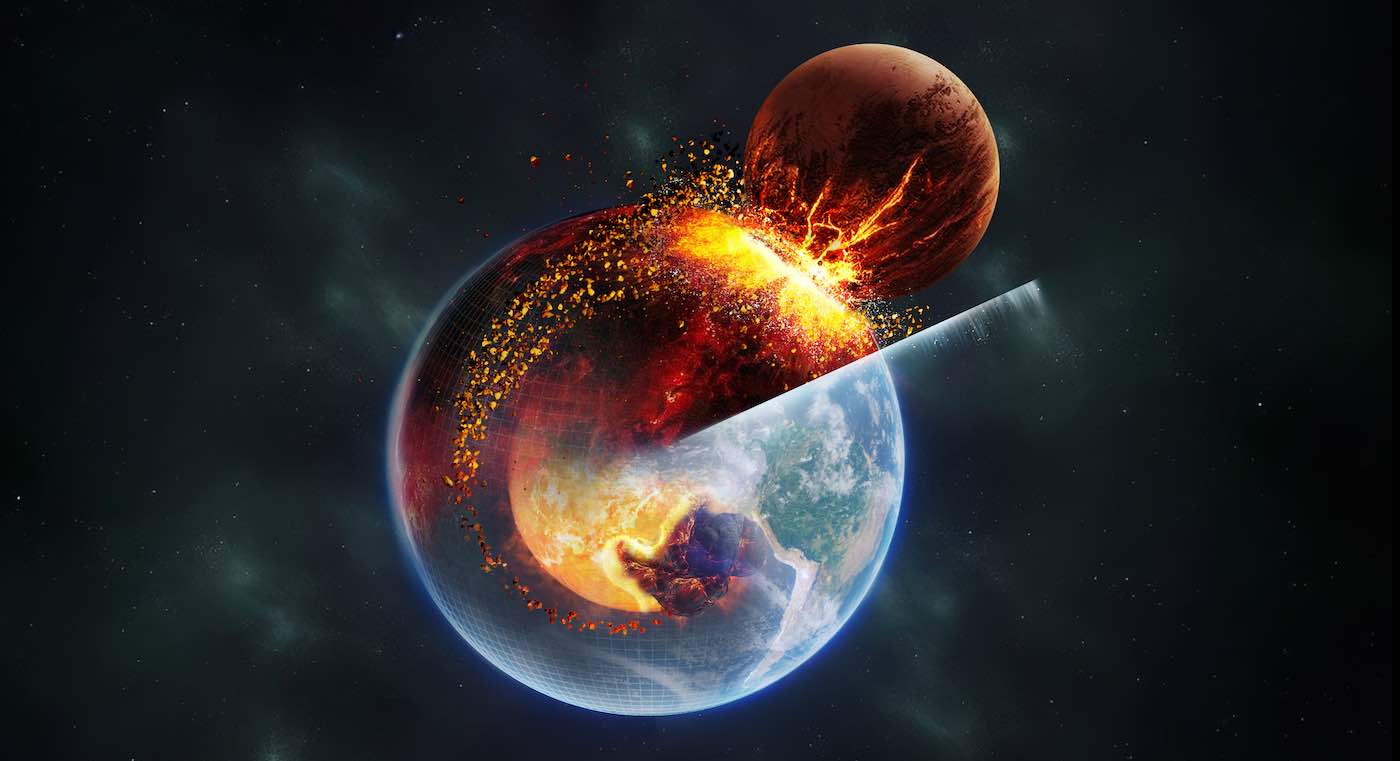
A proto planet the size of Mars called Theia may have collided, and remained, inside the Earth after ejecting enough material to form the Moon.
But in an expansive new study, researchers say there’s reason to believe that Theia’s impact on the solar system hasn’t concluded because it’s still influencing the forces of the Earth’s interior having been subsumed by our planet.
An international, interdisciplinary team of researchers identified something called Large Low-Velocity Provinces (LLVP) deep in the second layer of the Earth, known as the mantle, which could be relics of Theia.
The new study, published in the journal Nature, offers important new insights not only into the Earth’s internal structure but also its long-term evolution and the formation of the inner solar system.
How our own Moon was formed has proved a persistent challenge for several generations of scientists. The prevailing theories suggest that during the late stages of the Earth’s growth around 4.5 billion years ago, a huge collision known as the ‘giant impact’ formed the Moon from the debris.
Simulations have also indicated that the Moon likely inherited material primarily from Theia, whilst Earth, due to its bigger size, was only mildly mixed with Theian material.
Since Earth and Theia were relatively independent formations composed of different materials, previous theories suggested that the Moon, being dominated by Theian material, and the Earth, being dominated by Earthen material, should have distinct compositions.
However, high-precision isotope measurements later revealed that the compositions of the Earth and Moon are remarkably similar, thus challenging the conventional theory of the formation of the Moon.
Professor Hongping Deng of the Shanghai Astronomical Observatory (SHAO) has been researching this topic since 2017.
Deng has discovered that the early Earth featured an upper and lower mantle of very different material compositions. Specifically, the upper mantle featured a magma ocean created through a thorough mixing of material from Earth and Theia, while the lower mantle remained largely solid and retained the material composition of Earth.
Following discussions with geophysicists from the Swiss Federal Institute of Technology in Zurich, Deng and his collaborators realized that this mantle layering may have persisted to the present day about 1,000 km (600 miles) beneath the Earth’s surface.
“Our findings challenge the traditional notion that the giant impact led to the homogenization of the early Earth,” Deng said. “Instead, the Moon-forming giant impact appears to be the origin of the early mantle’s heterogeneity and marks the starting point for the Earth’s geological evolution over the course of 4.5 billion years.”
Another example of the Earth’s mantle diversity is the two anomalous regions, the LLVPs mentioned earlier, which stretch for hundreds of miles at the base of the mantle.
One is located beneath the African tectonic plate, whilst the other is under the Pacific plate. When seismic waves pass through these areas, wave velocity is significantly reduced.
Previous research has demonstrated that LLVPs have significant implications for the evolution of the mantle, the separation and aggregation of supercontinents, and the Earth’s tectonic plate structures but their origins have remained a mystery.
MORE SCIENCE LIKE THIS: Asteroid Sample Delivered Back to Earth in a ‘Brilliant Feat’–a Time Capsule of Ancient Solar System
Dr. Qian Yuan, from the California Institute of Technology, proposed along with his collaborators that LLVPs could have evolved from a small amount of Theian material that entered Earth’s lower mantle.
“Through precise analysis of a wider range of rock samples, combined with more refined giant impact models and Earth evolution models, we can infer the material composition and orbital dynamics of the primordial Earth and Theia,” said Dr. Yuan. “This allows us to constrain the entire history of the formation of the inner solar system.”
Through in-depth analysis, the research team calculated that around 2% of denser, iron-rich Theian material rapidly sank to the bottom of the mantle and, over the course of long-term mantle convection, formed two prominent LLVP regions which have remained stable throughout 4.5 billion years of geological evolution.
MORE SOLAR SYSTEM STORIES: ‘Alien’ Minerals Never Found on Earth Before Reveal Their Traumatic Origin Story
Diversity in the deep mantle suggests that the Earth’s interior is far from a uniform system.
Evidence such as isotope ratios of rare gases in samples of Icelandic basalt suggest that remnants of diversity between Earth and Theia in the deep mantle still serve to shape the Earth today, and can be used to inform the 4.5 billion years of geological evolution that followed the great impact.
SHARE This Fascinating Chapter In The Earth’s History With Your Friends…




















